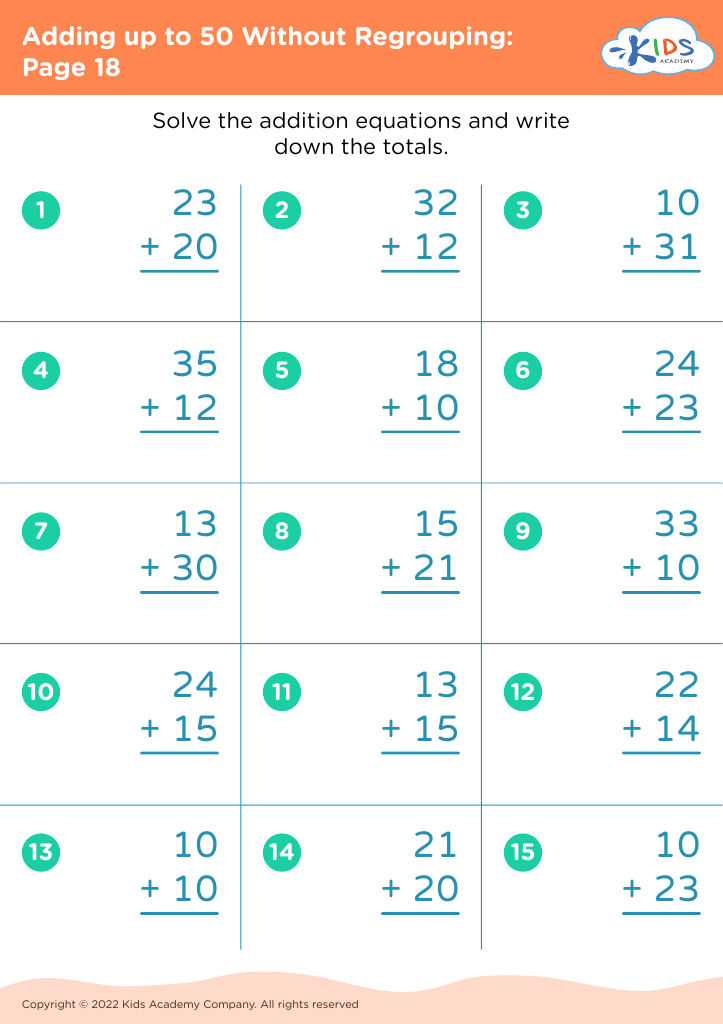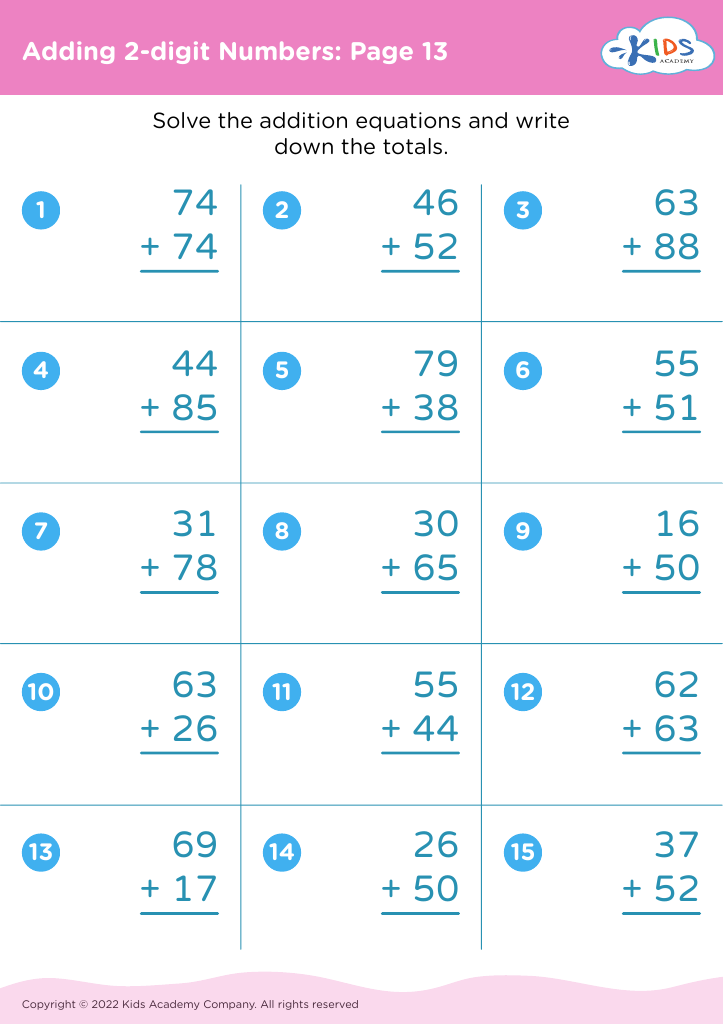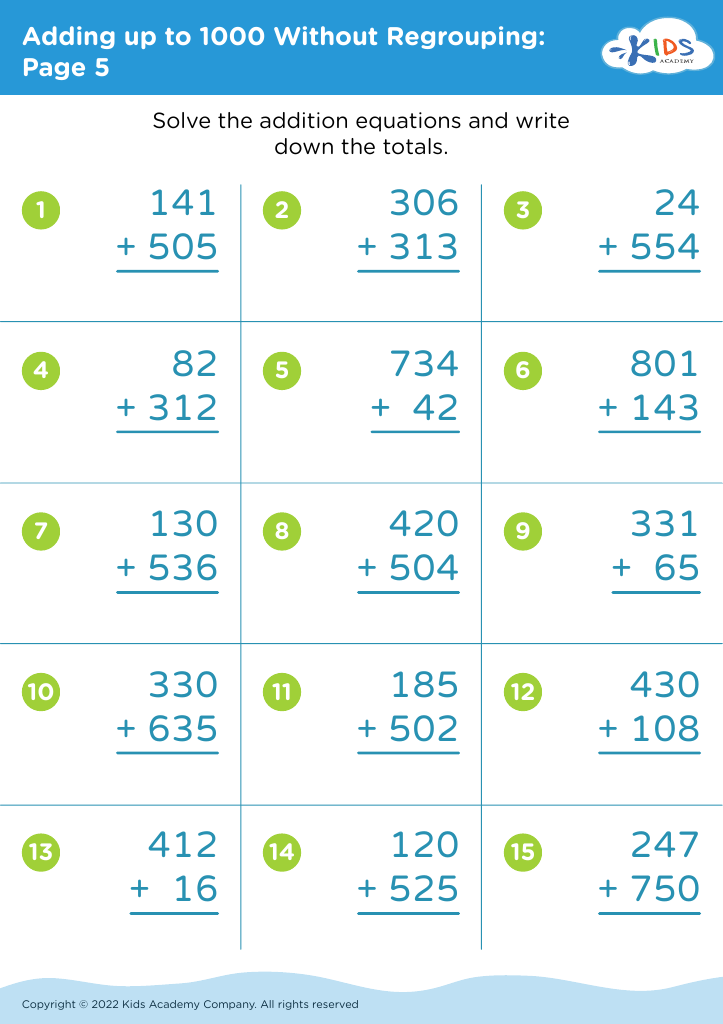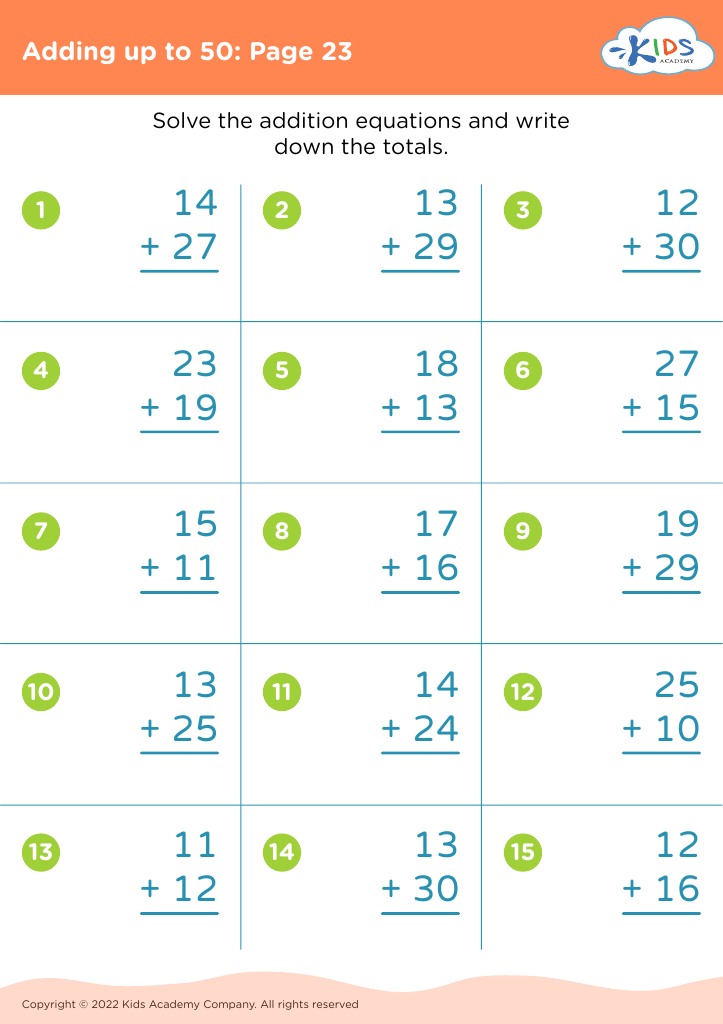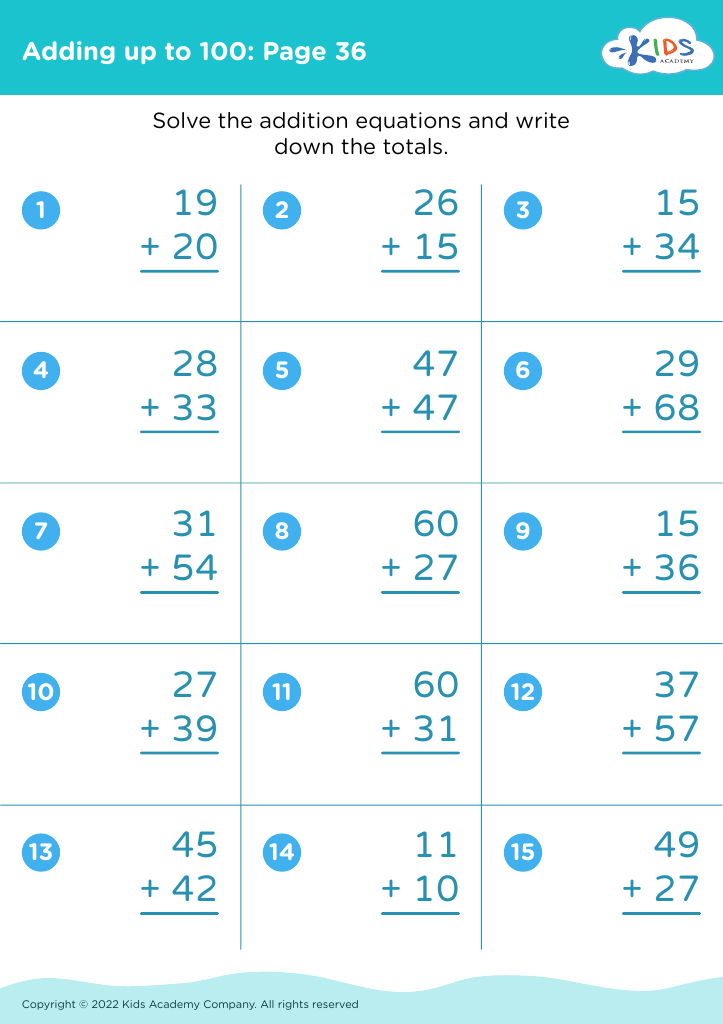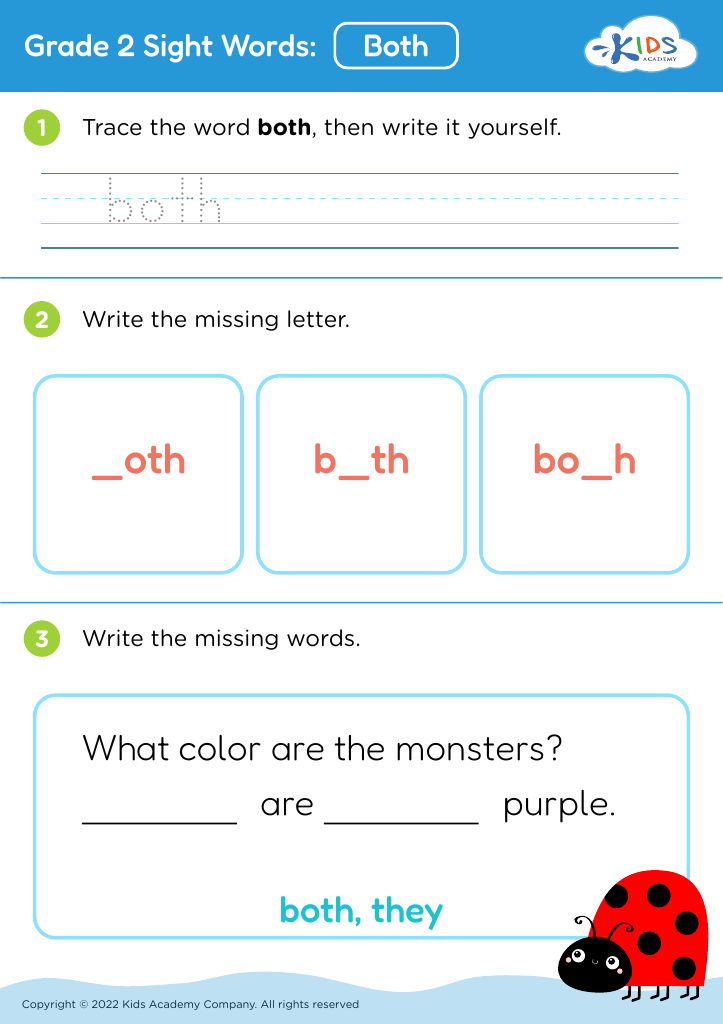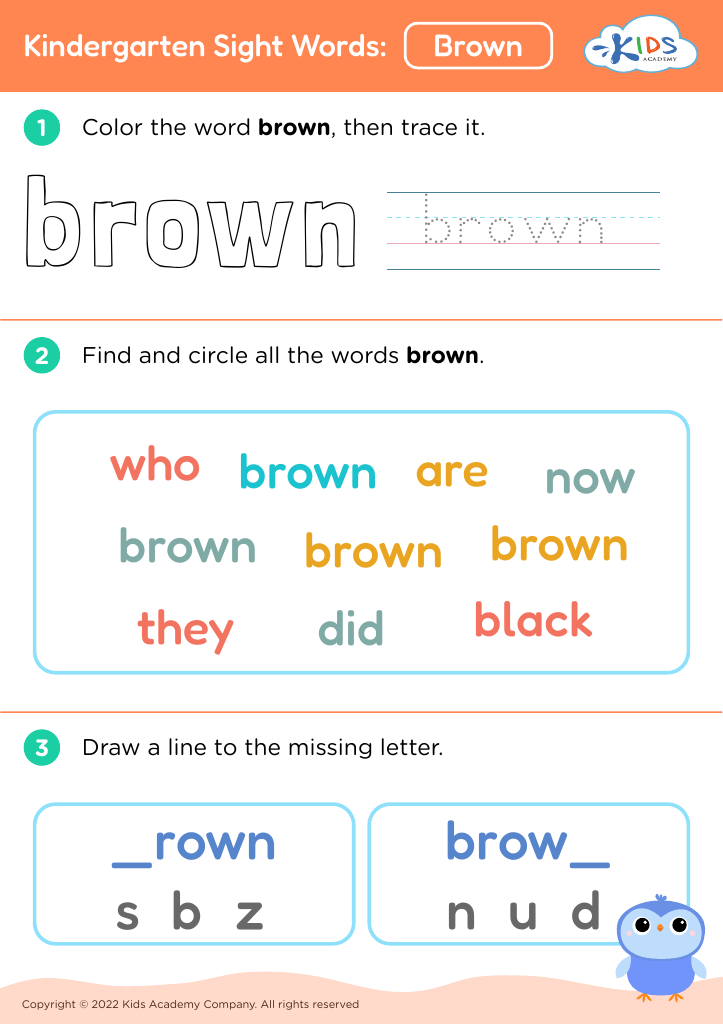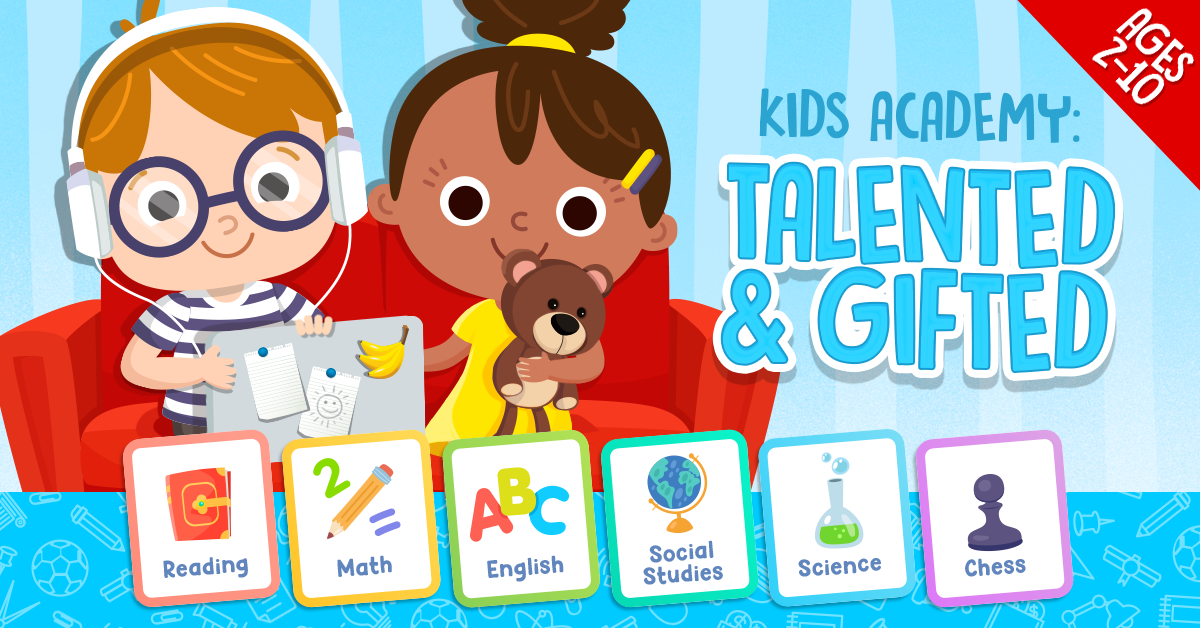Visual representation comprehension Worksheets for Ages 4-9
11 filtered results
-
From - To
Our engaging Visual Representation Comprehension Worksheets for ages 4-9 empower young learners to enhance their cognitive and analytical skills through fun and interactive exercises. These worksheets help children interpret and understand information represented visually, such as charts, graphs, and diagrams. By navigating different types of visual data, kids develop critical thinking, problem-solving abilities, and improve their overall comprehension in an enjoyable way. Perfect for classroom settings or home learning, our resources are designed to support your little one's journey toward academic success, providing a solid foundation for lifelong learning. Explore meaningful educational experiences with Kids Academy today!
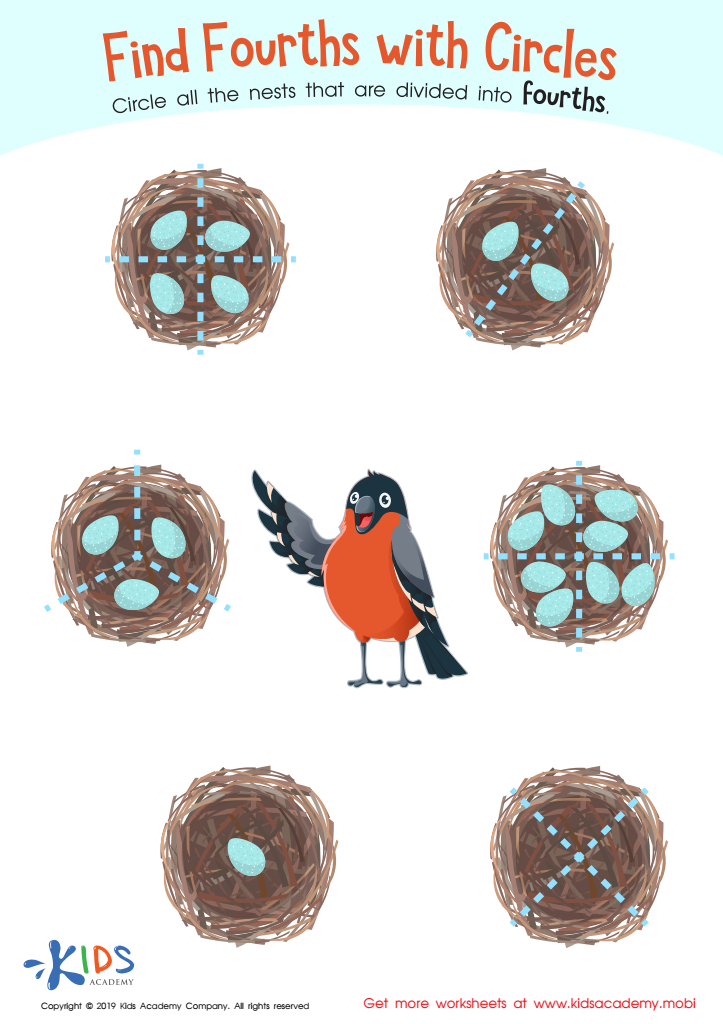

Find Fourths Circles Worksheet
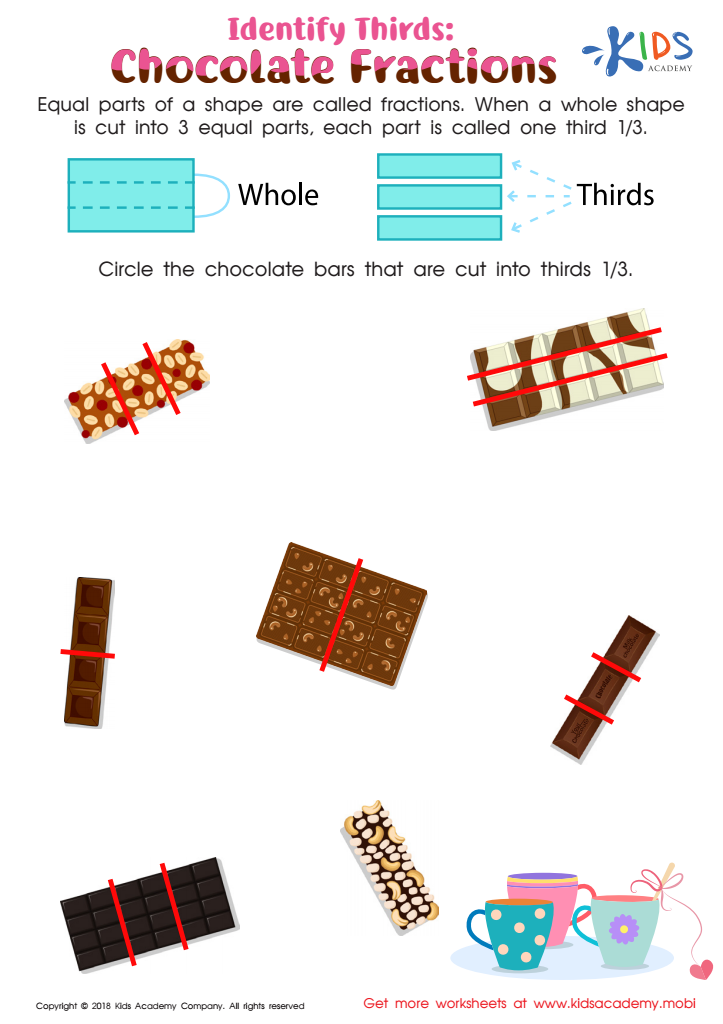

Identify Thirds: Chocolate Fractions Worksheet
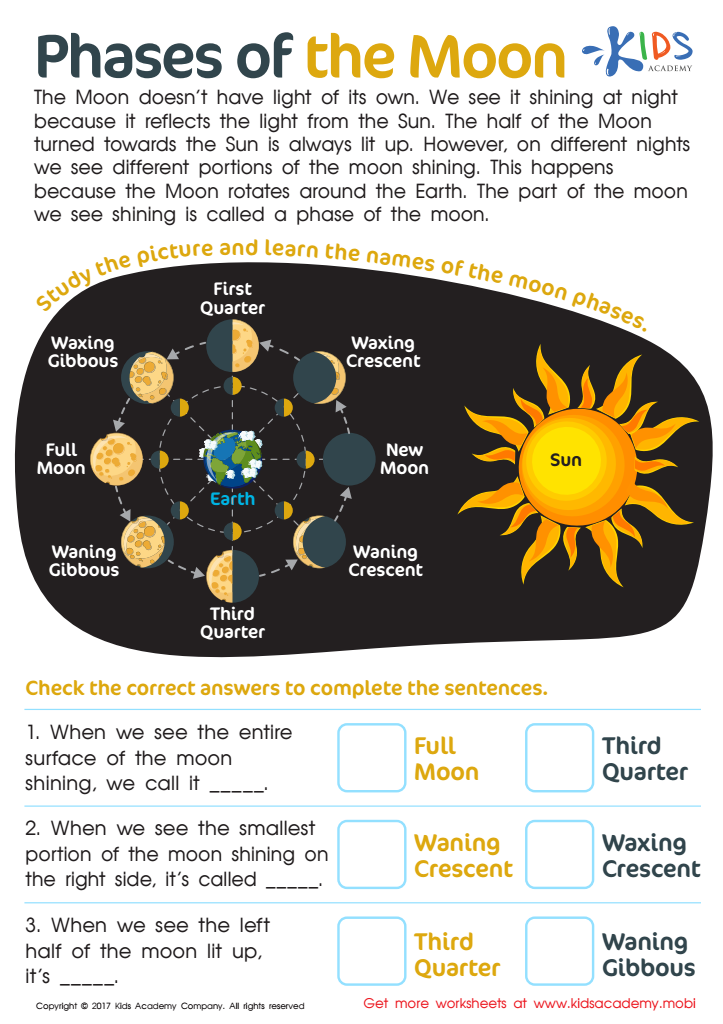

Phases of The Moon Worksheet
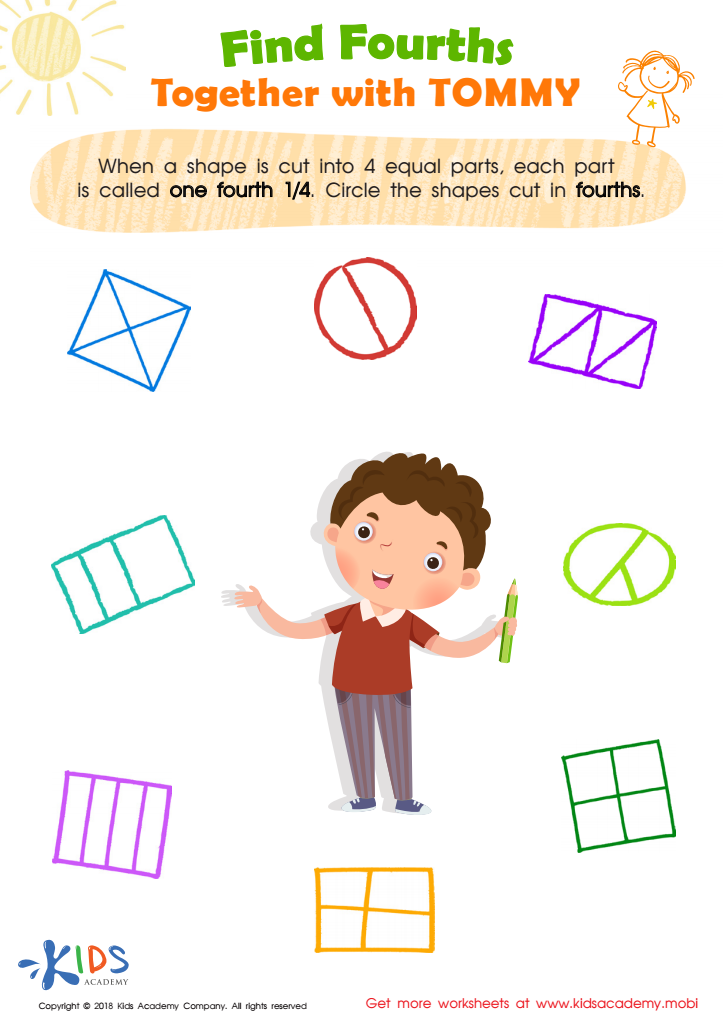

Find Fourths Together with Tommy Worksheet
Parents and teachers should deeply care about visual representation comprehension for children aged 4-9 because it is vital to their cognitive, linguistic, and social development. At this formative stage, children are highly visual learners; they grasp concepts more effectively when enhanced by images, diagrams, and other visual aids. Visual representations can simplify complex ideas, making information more accessible and easier to remember.
Implementing visual tools helps build essential skills such as critical thinking and problem-solving. For example, using story maps in reading activities boosts comprehension and sequencing abilities, while graphs in math lessons help children understand numerical relationships and data interpretation. Additionally, incorporating visuals supports language acquisition. Pictures can bridge vocabulary gaps and foster language development by providing context cues that aid in word recognition and usage.
Furthermore, comprehension of visual information is crucial for digital literacy, an increasingly important skill in the modern world. Children encounter visual data daily through screens and multimedia, making it imperative that they learn how to interpret it responsibly and accurately.
Socially, children who understand visual representation can express their ideas and emotions more effectively through art and non-verbal communication, fostering empathy and collaboration with peers. Therefore, encouraging visual literacy sets a strong foundation for lifelong learning and personal growth.
 Assign to My Students
Assign to My Students

